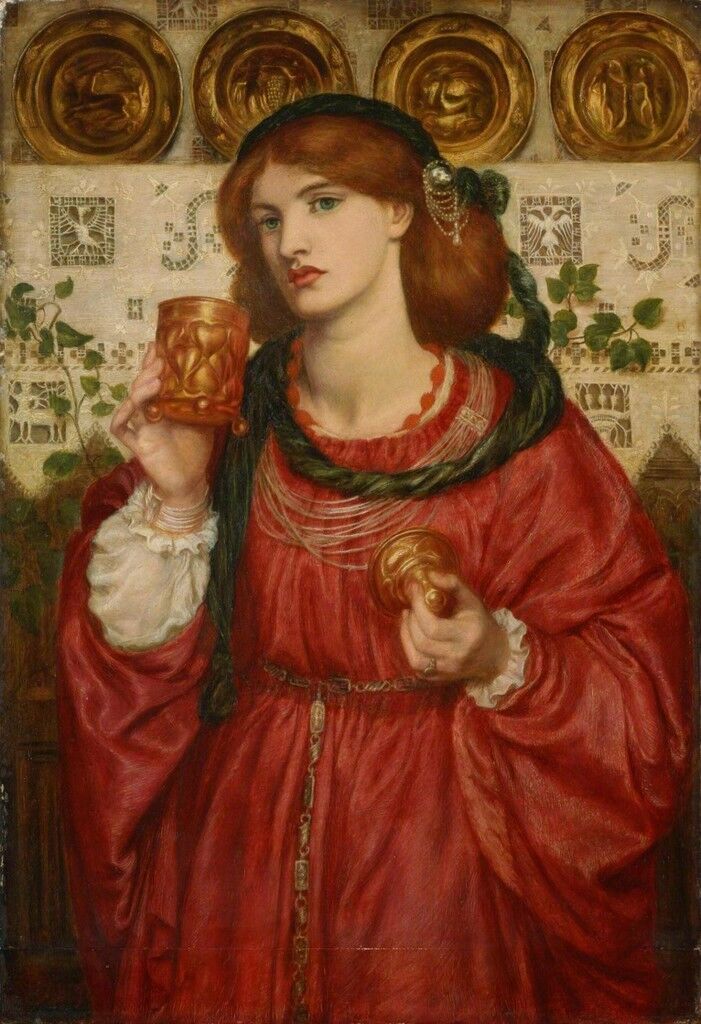/https://public-media.si-cdn.com/filer/6f/d9/6fd9a878-1e3a-4145-b706-0348d21f540e/003_sophie_gray_by_john_everett_millais.jpg) |
| John Everett Millais, Sophy Gray, 1856 |
 |
| Elizabeth Siddall by Dante Gabriel Rossetti in The Loving Cup, 1867 |
Per Encyclopedia Britannica, the Brotherhood’s work focused on religious and medieval themes. Painted with maximum realism inspired by 15th-century Florentine and Sienese paintings, the young artists’ naturalistic creations were populated by beautiful women. The cryptic initials “PRB” appeared in the bottom corner of early Pre-Raphaelite works. Simply put, the Brotherhood was a boys’ club that intentionally excluded women.
“Though its goals were ‘serious and heartfelt,’” explains Dinah Roe, a senior lecturer at Oxford Brookes University, for the British Library, “the PRB was founded in a spirit of waggish male camaraderie which expressed itself in pranks, late-night smoking sessions and midnight jaunts around London’s streets and pleasure gardens.”
The Brotherhood’s models, who often doubled as the artists’ lovers, were usually at the center of their creations. But some, like Siddal, used their seemingly passive roles as models to fund their own artistic careers alongside their elite husbands. Siddal is among the Pre-Raphaelite women painted over by history. She started modeling not to gain the attention of men, but to fund her own artistic practice. Initially working part time at her parents’ hat shop while modeling on the side, Siddal gained an unprecedented amount of popularity in the Pre-Raphaelite circle, with her likeness becoming a symbol of feminine beauty. (Read more.)
More HERE.
Share

















No comments:
Post a Comment